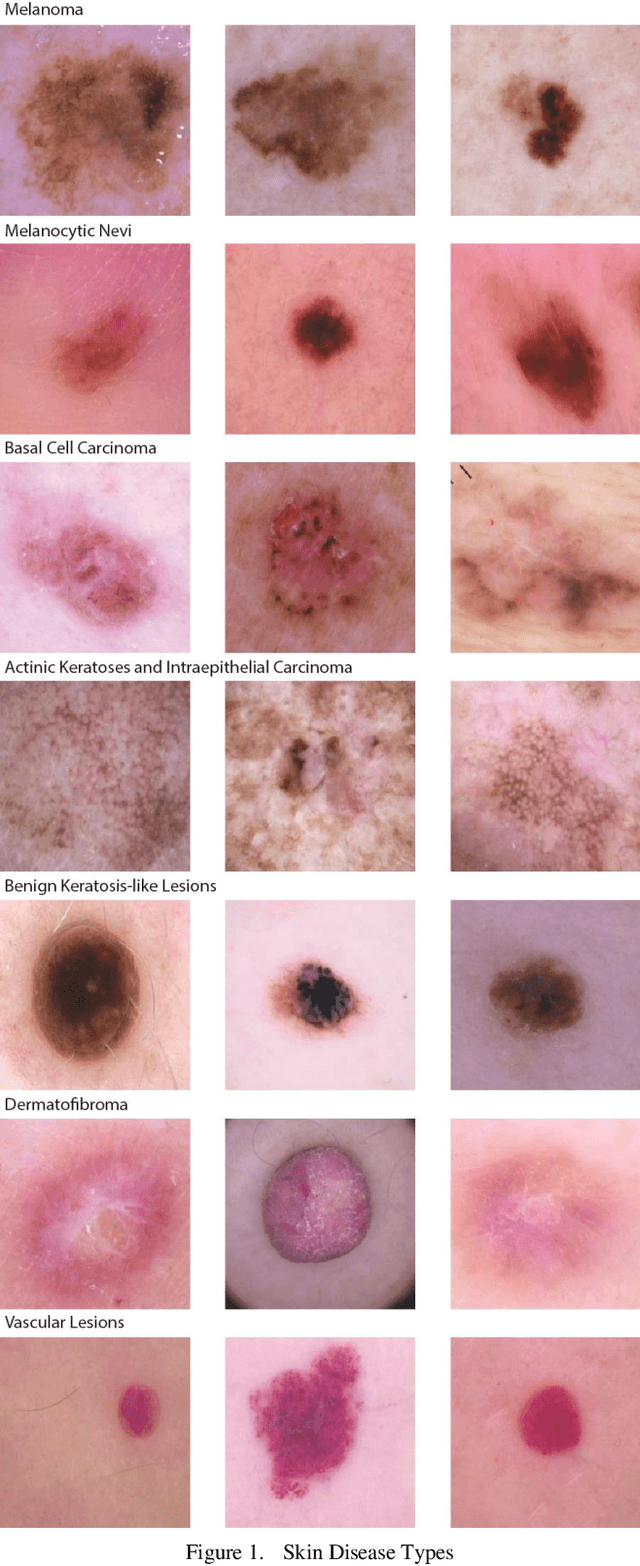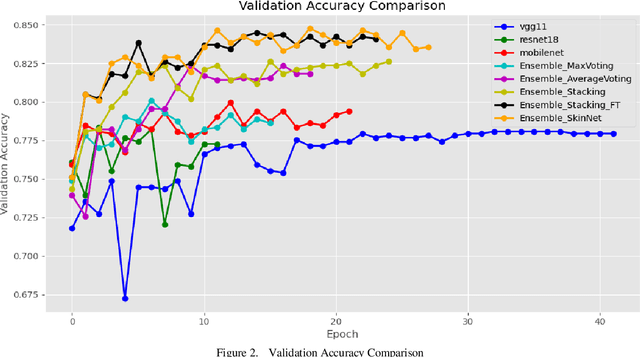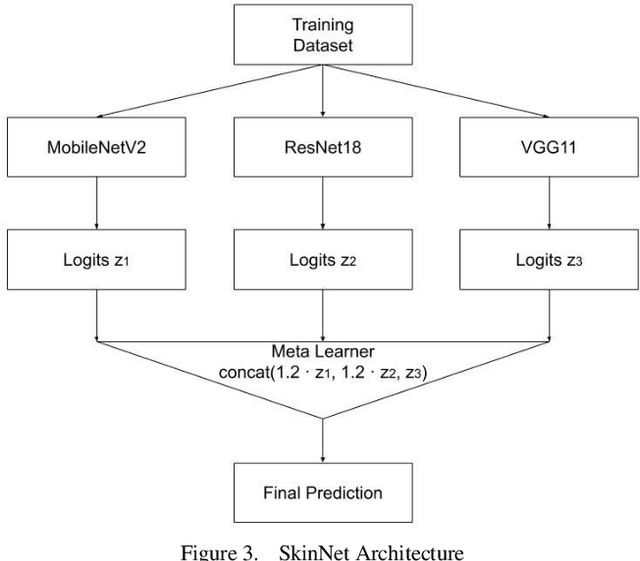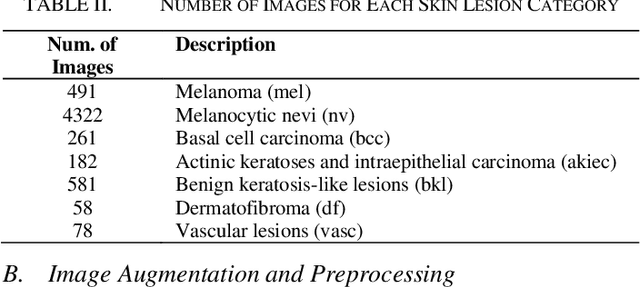Yafeng Yan
Enhancing Skin Lesion Diagnosis with Ensemble Learning
Sep 06, 2024



Abstract:Skin lesions are an increasingly significant medical concern, varying widely in severity from benign to cancerous. Accurate diagnosis is essential for ensuring timely and appropriate treatment. This study examines the implementation of deep learning methods to assist in the diagnosis of skin lesions using the HAM10000 dataset, which contains seven distinct types of lesions. First, we evaluated three pre-trained models: MobileNetV2, ResNet18, and VGG11, achieving accuracies of 0.798, 0.802, and 0.805, respectively. To further enhance classification accuracy, we developed ensemble models employing max voting, average voting, and stacking, resulting in accuracies of 0.803, 0.82, and 0.83. Building on the best-performing ensemble learning model, stacking, we developed our proposed model, SkinNet, which incorporates a customized architecture and fine-tuning, achieving an accuracy of 0.867 and an AUC of 0.96. This substantial improvement over individual models demonstrates the effectiveness of ensemble learning in improving skin lesion classification.
Investigation of Customized Medical Decision Algorithms Utilizing Graph Neural Networks
May 23, 2024



Abstract:Aiming at the limitations of traditional medical decision system in processing large-scale heterogeneous medical data and realizing highly personalized recommendation, this paper introduces a personalized medical decision algorithm utilizing graph neural network (GNN). This research innovatively integrates graph neural network technology into the medical and health field, aiming to build a high-precision representation model of patient health status by mining the complex association between patients' clinical characteristics, genetic information, living habits. In this study, medical data is preprocessed to transform it into a graph structure, where nodes represent different data entities (such as patients, diseases, genes, etc.) and edges represent interactions or relationships between entities. The core of the algorithm is to design a novel multi-scale fusion mechanism, combining the historical medical records, physiological indicators and genetic characteristics of patients, to dynamically adjust the attention allocation strategy of the graph neural network, so as to achieve highly customized analysis of individual cases. In the experimental part, this study selected several publicly available medical data sets for validation, and the results showed that compared with traditional machine learning methods and a single graph neural network model, the proposed personalized medical decision algorithm showed significantly superior performance in terms of disease prediction accuracy, treatment effect evaluation and patient risk stratification.
 Add to Chrome
Add to Chrome Add to Firefox
Add to Firefox Add to Edge
Add to Edge